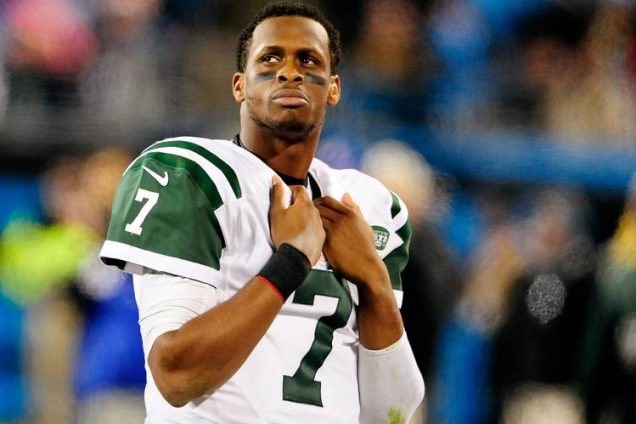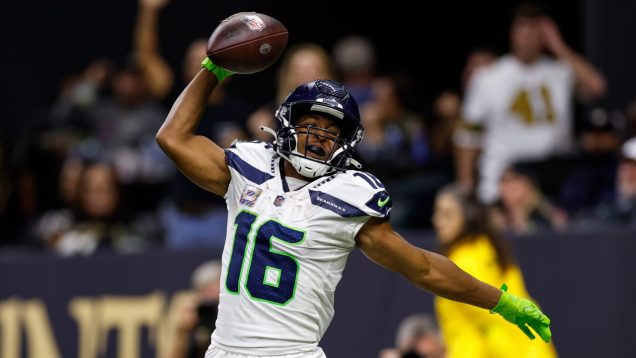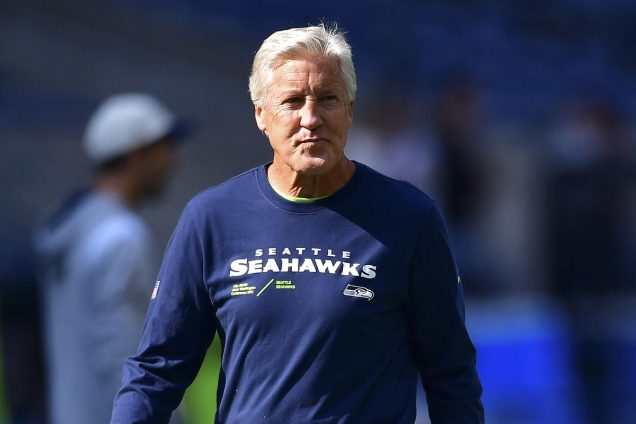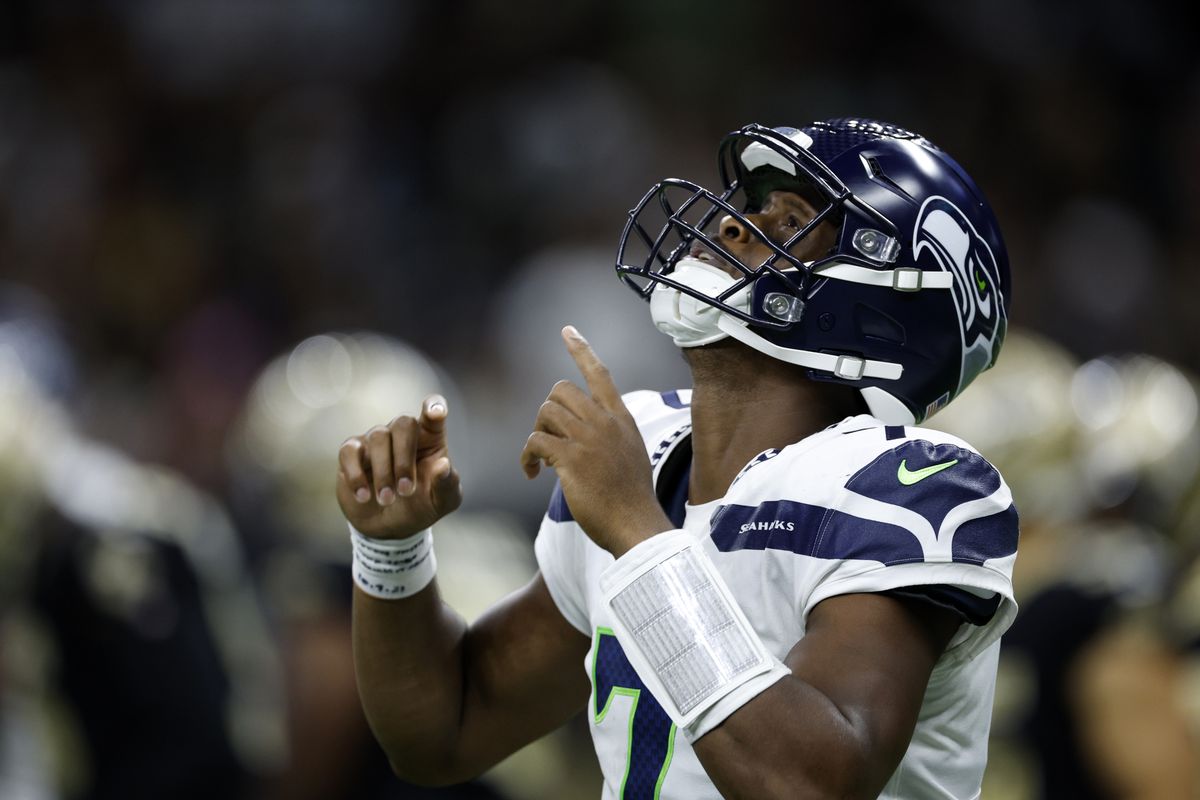The B-Gap: Geno Smith and the Seahawks still not writing back
By Sam Robb O’Hagan
Geno Smith has been through it.
There’s a fine line that every young, highly touted NFL quarterback nervously creeps along when they first enter the league: Where the dream becomes the nightmare, the promise becomes the disappointment, the stud becomes the bum.
Geno can tell you all about it.
As a national sensation at West Virginia in 2012, Smith rode along the line. As the supposed savior to the irredeemable New York Jets in the couple of years beyond, he fell below it. What was once universal praise in college became constant resentment in the pros. All of the heavy expectations that come with being a highly drafted NFL QB, let alone one for the Jets, were quickly deemed to be placed on shoulders not broad enough. Once a potential superstar, now nothing more than a backup; only good enough to be the last resort, and not wanted for anything else.
He was written off.

Geno will tell you all about that.
Almost six years after his final day in a Jets uniform, after an equally disappointing cameo for the New York Giants — the Jets’ equally helpless roommates — an uneventful stop in LA with the Chargers, and two seasons in the shadow of Seattle Seahawks legend Russell Wilson, Smith stood triumphantly before the microphone of ESPN’s Monday Night Football after leading the Seahawks to an opening week victory over Wilson’s Denver Broncos. After besting his franchise’s newest enemy, who rose above the very same line he sunk below, Smith reminded the world that despite being written off all of those years ago, he still hadn’t written back. In other words, Smith knows he’s good, whatever you or I think be damned.
Four weeks later, despite a bitterly avoidable loss in New Orleans to fall below .500 , Smith and the 52 other Seahawks also written off from the moment Wilson finally forced his way out the door, still haven’t written back.
Smith and the Seahawks are playing (mostly) good football. They’ve been competitive in all but one of their first five games. But for their one glaring weakness — an extremely leaky run defense — the ‘Hawks could very easily be sitting here with four wins from five.
Much of the media’s sudden and renewed praise towards the Seahawks has been granted to Smith, and more than rightfully so. His extraordinary career revival, paralleled by Wilson’s remarkable southern turn, has become this season’s “feel-good” national story.
Smith is playing good football — certainly better than Wilson — but the gap between the performances of Smith’s Seahawks and Wilson’s Broncos have as much ground between the two QBs as they do with the two teams and coaching staffs around them.
It’s an ironic conclusion given the circumstances surrounding Wilson’s departure in Seattle, but the Seahawks’ success this season hasn’t just been about Smith being incredible (though he is!). The team’s internal structure, brilliantly orchestrated by head coach Pete Carroll’s offensive staff, is finally giving Smith the help he needs.
The superficial numbers for the Seahawks offense this season are eye-popping: 368 yards per game, 246 through the air and the remaining 122 (!) on the ground. The league’s eighth-best total offense has converted those yards into its seventh-best scoring unit, at over 25 points per game. The Broncos, for reference, are averaging around 10 points less per game and are the second-worst scoring offense in the league. Given the extent of the negativity surrounding this offense a month ago… not a bad start.
But stats this surface-level lie all the time. When you dig deeper, into the much safer and reliable world of advanced numbers, the Seahawks are even better. The offense ranks first (!!) in the entire NFL in Football Outsiders’ DVOA, a measure of “a team’s efficiency by comparing success on every single play to a league average based on situation and opponent.” Smith himself, despite it being a subjective and opinion-based metric, is Pro Football Focus’ highest-graded QB (!!!) through five weeks at a 90.2. Yes, higher than Josh Allen, Patrick Mahomes, Jalen Hurts and Lamar Jackson.
Smith has been invaluable, and the unit that surrounds him has held their own. The offensive line, universally cited as the team’s downfall during the end of Wilson’s reign in Seattle, has regathered itself around Smith to the tune of the league’s second-best pass-protecting unit by ESPN’s pass-block win rate at 67 percent.
The ‘Hawks offensive playmakers, specifically receivers DK Metcalf and Tyler Lockett, have maintained their stellar form through the monumental transition under center. Each have over 370 receiving yards and 25 catches through five weeks. Seattle’s running backs, rookie Kenneth Walker III and fourth-year Rashaad Penny, previously resented for their exuberantly high draft position, are both averaging over six yards per carry (despite the offensive line ranking 27th in run-block win rate).
Penny was excellent in the five games before his season-ending injury in New Orleans. Walker, though with limited usage, was perhaps just as impressive to begin his rookie season, and is now primed to take over the starting role in Seattle’s backfield.

All of this is the long-winded way of saying the Seahawks’ offense just has great football players. Most significantly, Carroll’s offensive staff, led by offensive coordinator Shane Waldron, has displayed experience and stability. The scheme is tailored to Smith’s strengths: decisiveness, accuracy and confidence, specifically over the middle of the field. Waldron has avoided asking too much of his revived signal-caller (though Smith has routinely executed incredibly difficult throws anyway), incorporating a Shanahan-inspired passing attack that hones in on the middle of the field.
Everything Waldron and the rest of Seattle’s staff are doing , it all makes sense (almost as if Pete Carroll, whose won nearly everything there is to win in the sport and is one of the most experienced coaches in the league, knows what he’s doing).
In Denver, everything rookie head coach Nathaniel Hackett and his staff are doing appears counter-intuitive. The offense doesn’t appear designed to avoid exposing its quarterback’s biggest weakness: ironically, throwing over the middle of the field. Of course, your Hall of Fame QB paid over $242 million should probably be able to reliably throw over the middle of the field anyway, but that’s a very long argument for another day. Wilson has still put together a legendary career, the type of thing you don’t exactly luck into. The Broncos should be able to figure it out. They haven’t.
The Seahawks and Carroll, for almost a decade, did figure it out with Wilson. Now with Smith, they’ve done it again.

Of course, it’s worth noting the Seahawks have yet to play a clear contender, and save for the San Francisco 49ers, who they scored just seven points against, have faced four average-to-awful defenses throughout their offensive renaissance. And of course, they still enter the sixth week of the season with more losses than wins.
But the offense ranks near the top in basically every advanced metric there is, and the presumably qualified analysts at PFF really, really love Smith. Seattle is doing something right.
Smith deserves plenty of praise for his previously unthinkable performance thus far; he has raised the ceiling of Seattle’s offense to heights even Carroll’s most committed defenders could not envision before the season. But Carroll and the rest of the Seahawks’ internal structure deserve equally as much credit for knowing what it to takes to establish the foundation that has allowed Smith to finally stand tall above those that wrote him off.
